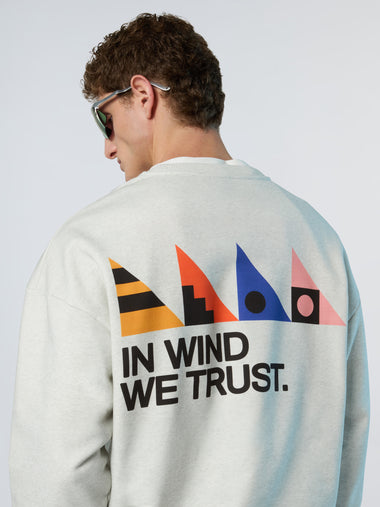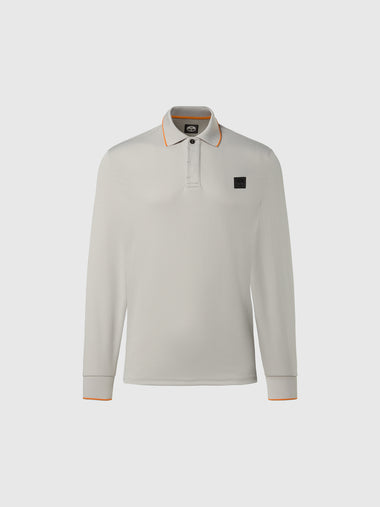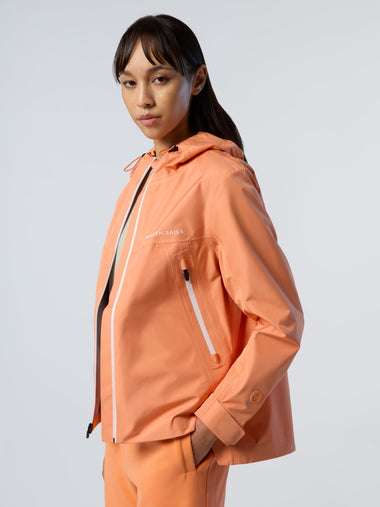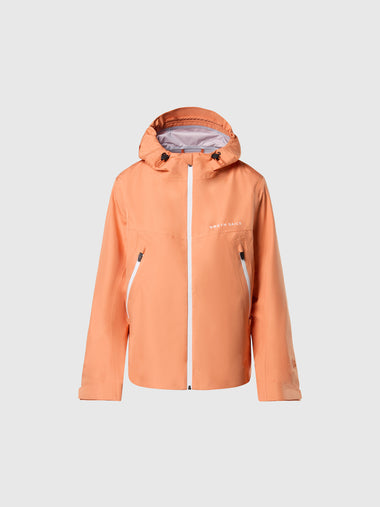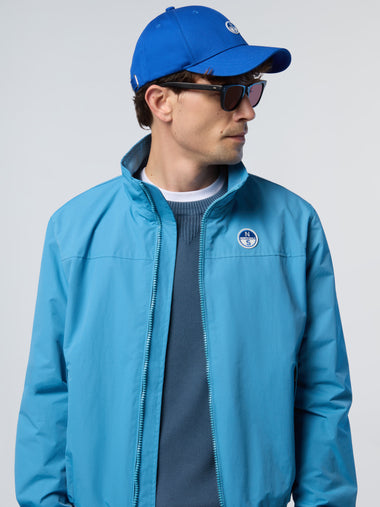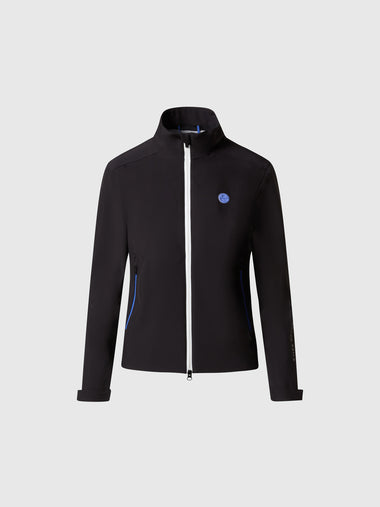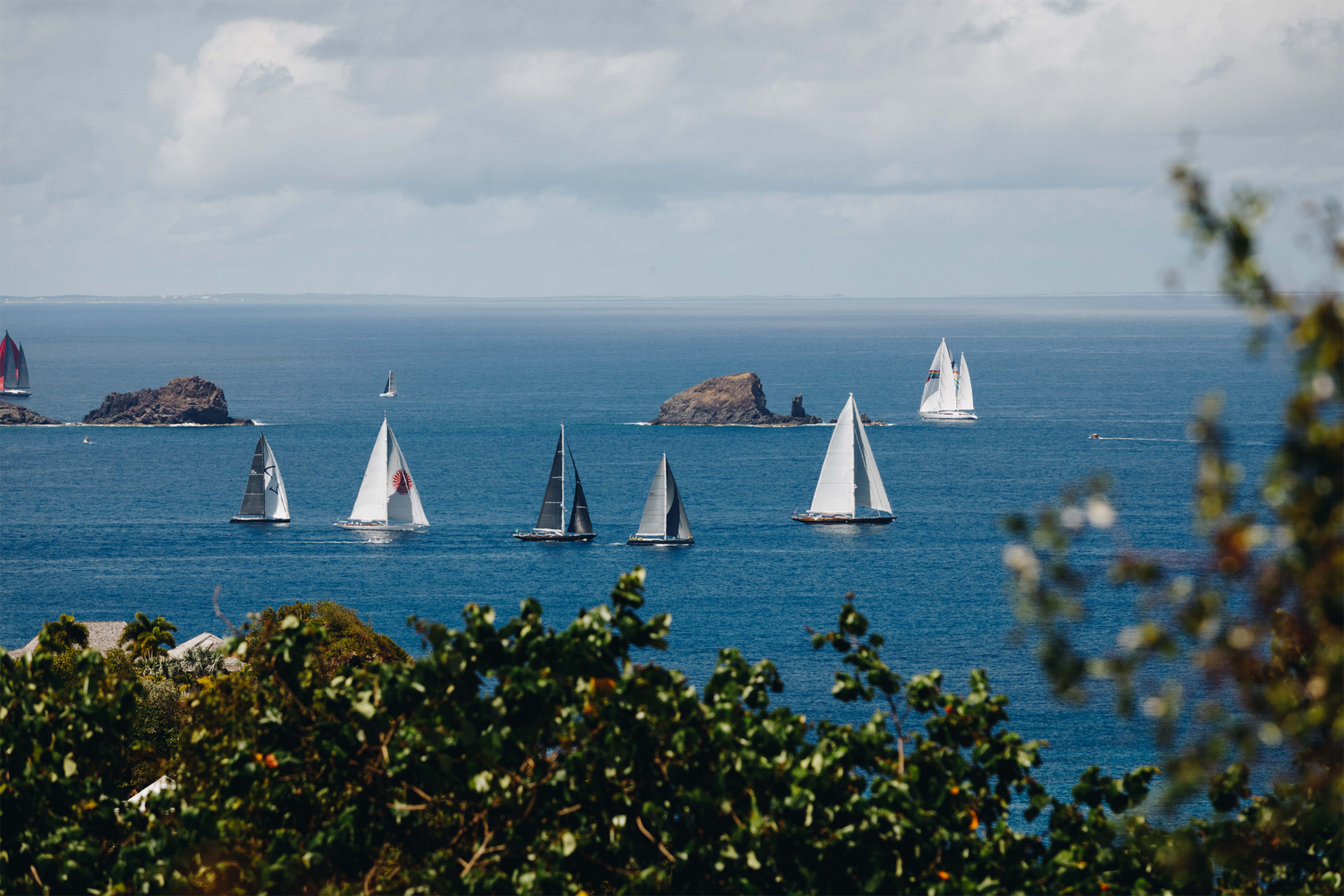WHAT YOU GOT THERE EMIRATES TEAM NEW ZEALAND?
WHAT YOU GOT THERE EMIRATES TEAM NEW ZEALAND?
Are these sails secret weapons – or are the Kiwis playing mind games?

Over the past couple of months, Gautier Sergent has had plenty of time to observe and analyze Te Rehutai’s sails.
One of North Sails leading designers, Sergent was embedded with INEOS TEAM UK in the 36th America’s Cup and has been in Auckland, New Zealand since August. With all eyes on the America’s Cup races later this week, he’s been paying extra attention to the Kiwis’ AC75.
Truth is, there is no knowing what’s happening behind their Viaduct Harbour base’s doors, but here are a couple of Sergent’s connoisseur comments ahead of the racing.
Is THAT a Code Zero or Whomper Sail?
“We’ve seen them use a very light Code Zero on the bowsprit. The clew point is quite high, and the sail looks like it’s been designed for very, very light conditions. We don’t know for sure, but looking at the material and its geometry, we suspect that this sail is not designed to foil.
“So we think it’s a sail they could use when the boat needs to get to the next patch of pressure quicker and then up on the foil before the other team. It could also help in pre-start or finishing phases. The races have a time limit (of 45 minutes), so if they’re leading but the racing is dragging on, this sail could help them cross the line on time and win a point.”
Remember race one of the Christmas Cup when Emirates Team New Zealand raced against INEOS TEAM UK? The conditions were so light that the race eventually timed out, however, the race could have easily been awarded to a team with a Code Zero- like sail. “It was OK for the Christmas Cup, but you cannot afford to give away points in an America’s Cup match,” Sergent said.
March in Auckland usually brings changeable weather and weaker thermal winds, making the racing conditions reliant on the gradient winds. If there is no gradient, there won’t be wind at all – and with the racing allowed to start at 6.5 knots only, a sail designed for very light conditions might come in handy.
“Remember,” adds Sergent, “it’s also part of the game to show only what you want to show! They might have designed and tested this sail only to decide it didn’t work – but are choosing to show it to get everyone else thinking. Imagine you’ve spent time working on something that’s not performing – you’d want the other teams to waste that time too.
“We’ve yet to see a Code Zero racing in this America’s Cup. It’s such a specific sail that some of the teams have even decided to design bowsprits that can’t carry that sail load. But since Emirates Team New Zealand have tried this specific Code Zero so late in the game, we doubt it’s a mind game.
“What’s funny is that we might never know. If there is no light day, they won’t use it and we’ll keep asking ourselves, was it real… or was it all a mind game?”
To Batwing or not
A couple of weeks ago, the Kiwis were seen trialing a Batwing – a very small mainsail that was first tested by American Magic.
“The rules don’t take potential leech hollows between the girths into account when calculating the sail area,” explains Sergent. “You can actually design a mainsail that’s smaller than the 135 sqm allowed by the class rules by using this bat-like design. These boats are quickly overpowered and you can’t take a reef in, so this Batwing could let you reduce the drag in heavy winds.
“But so far, we’ve only seen the Kiwis try this concept, with an old sail they’ve recut, we haven’t seen them use a new one designed specifically for this. It might just be a way to distract Luna Rossa Prada Pirelli.”
Main course
One more thing caught Sergent’s attention – the mainsail settings onboard Emirates Team New Zealand.
“We can add all sorts of control systems in the top four meters of the mainsail: ropes, boat hooks, everything that makes it possible to control that shape. But we haven’t noticed much of that whenever we looked at the New Zealand team preparing and hoisting their mainsail.
“Plus every other team hoist their mainsail pre-assembled, with both skins already tied together, but the Kiwis bring both skins in different bags and only connect them once the heads are partially hoisted.”

So, what would that mean performance-wise? Sergent pauses before saying, “It means they don’t have this very sophisticated system to take care of which saves weight which can be used elsewhere and they could potentially change mainsails faster between races.
“We’ve also noticed they can bend their mast significantly more than everyone else, even though the masts are one-design. We’re assuming they’re using their cunningham to do that with a specific sail structure to suit, but we’re not quite sure.
All of that could explain why Emirates Team New Zealand tend to show flatter sails up range and tighter leech settings while Luna Rossa Prada Pirelli usually sail with torqued sail trimmings.
The Kiwis have also lowered the deck by raising the mast base to keep it rule compliant, adding “free” area at the bottom of their mainsail.
These, and a thousand other design decisions, will all come to fruition on Wednesday in Auckland as the New Zealand and the Italian teams face each other in the first race of the 36th America’s Cup.





